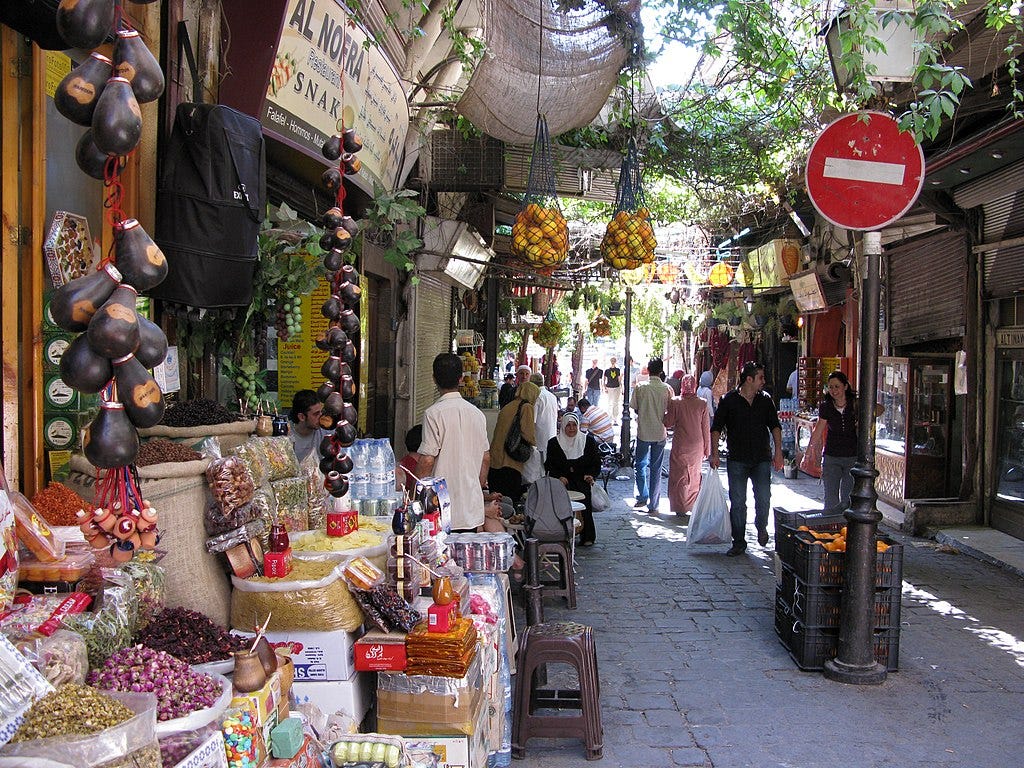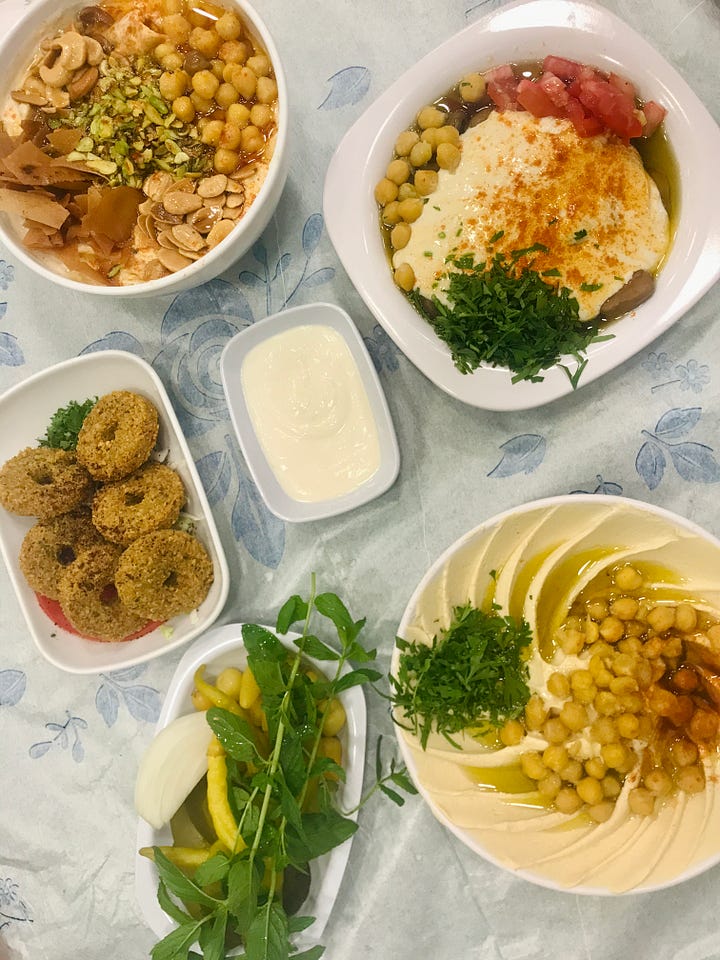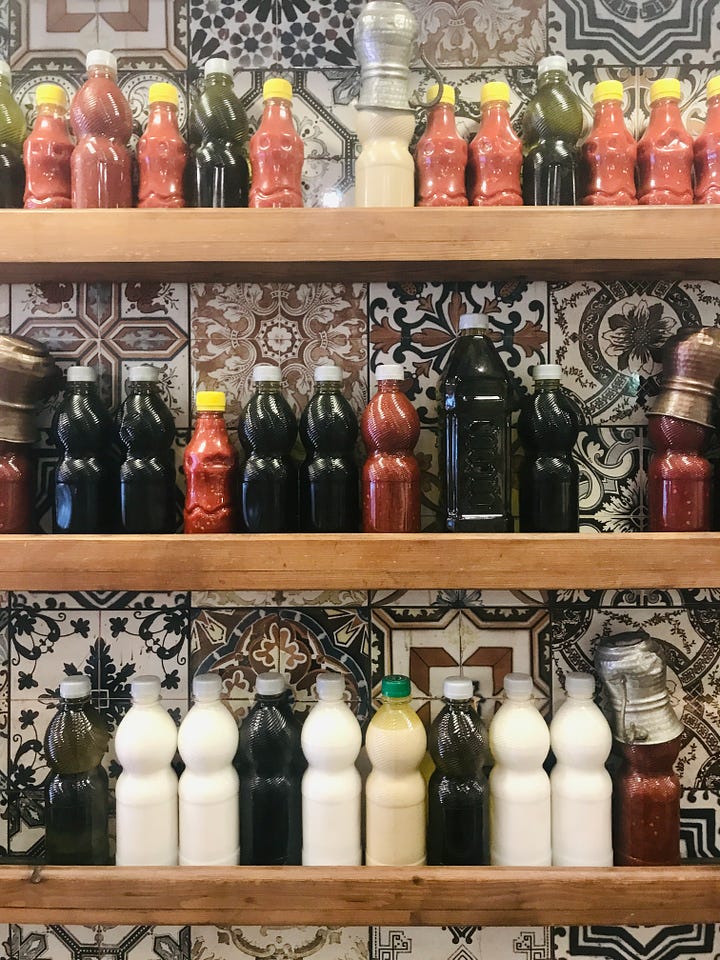Mabrouk, Syrians
As Syrians celebrate the fall of the Assad regime, a small look at some of the art and culture that has been created and preserved during the long war and exile.

When I first moved to Turkey, its neighbor to the south was still a place where people would go for cultural tourism or to learn Arabic (I will always sorely regret not visiting a friend while she was studying in Damascus back then). Within a few years, though, the Syrian revolution had begun, quickly spiraling into a prolonged, brutal war that sent millions fleeing for their lives. On the streets of Istanbul, you would see refugee families sitting all day long on the sidewalk, displaying copies of their Syrian passports in front of them in hopes of receiving a small bit of charity.
Many Syrians I met had lost loved ones, either killed in the conflict or on the dangerous journey to hoped-for safety; the “luckier” ones had seen their families scattered around the world, not knowing when or if they might ever see each other again. The stories were grim.
“At my daughter’s school, some students were being taken out of their classrooms for making small protests,” one Syrian woman from Latakia told me. “They could be taken away for months, when you don’t know where they are, or never seen again. Two girls in our neighborhood committed suicide after they returned from being taken away.”
Friends and colleagues created powerful work documenting the conflict and the plight and resilience of refugees: Bradley Secker’s photographs of Syrians holding the keys to the homes from which they had been driven and Jodi Hilton’s images of shoes left behind on the Turkish coast by refugees hurried by smugglers into often unseaworthy boats. Nish Nalbandian’s photo books A Handful of Dust and A Whole World Blind. Delphine Minoui’s documentary film Daraya: A Library Under Bombs. Kerem Yücel’s refugee portraits. The list went on and on, and so did the war.


As time passed, Syrians in Turkey found ways to make a home here – and to share something of the land they had been forced to leave behind. The first time I ever tasted Syrian food (a truly delicious cuisine) was at a fundraising dinner put on a friend trying to raise some extra money for his studies; he cooked up the massive meal with his mom back in Syria on the phone providing step-by-step instructions. It wasn’t long before there was a whole culinary constellation of Syrian restaurants, bakeries, grocery shops, and food entrepreneurs in Istanbul, part of a Syrian kitchen in exile around the world.
Syrian creatives established cultural centers like Arthere in Kadıköy, YOLO in Fatih, and Douzan in the southeastern city of Gaziantep as places where exiled artists and members of host communities could come together for exhibitions, performances, and other events. Syrian artisans began producing jewelry in Istanbul and Syrian musicians began collaborating with their Turkish counterparts on new sounds.
Everyday life for many Syrians in Turkey – and elsewhere around the world – has been full of hardship and fraught with discrimination and even outright hatred. But despite all they have faced, their cultural contributions have enriched the cities where they live. May this weekend’s stunning collapse of the bloodthirsty Assad dictatorship provide those who wish to return to Syria the opportunity to use the rich cultural heritage they have preserved and nourished in exile as part of efforts to rebuild their beloved country.
Further reading:
12 Books About Syria – Journalist Kareem Shaheen’s selection of reportage, memoir, history, and literature about the war, the refugee experience, and what led up to it all.
Syria Off Frame – An online exhibition of works by contemporary Syrian artists.
Our Syria: Recipes from Home – Cookbook authors Dina Mousawi and Itab Azzam gathered recipes and stories from Syrian women living in exile across the Middle East and Europe.
The Closest I Got to Damascus – A beautiful essay by Omar Kadkoy on what December 8 felt like for a Syrian in Istanbul.




This was really helpful, thank you!